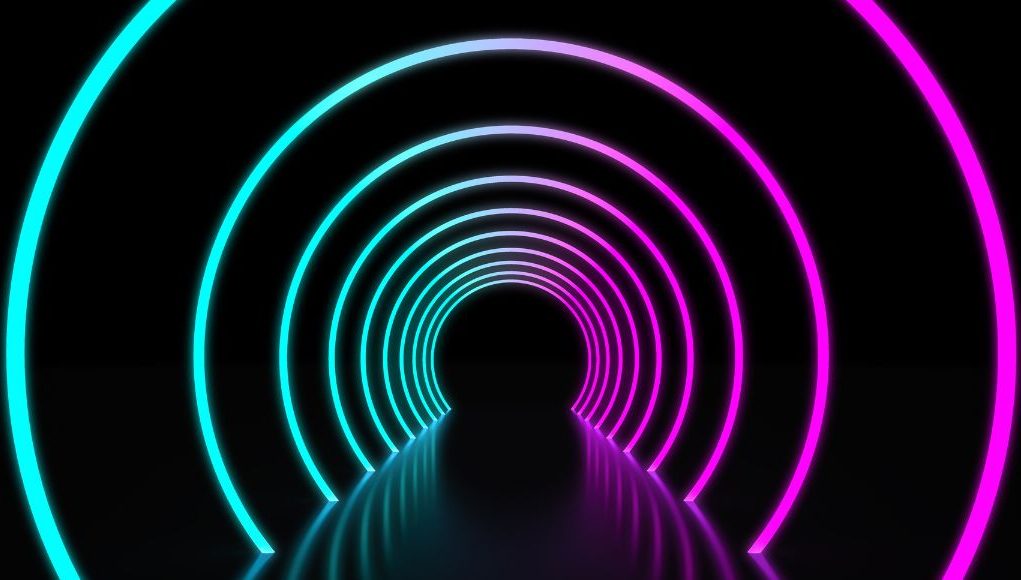Neon is back.
And this time, they’re more vibrant than ever! They’re also more flexible and versatile than they used to be.
The new era of neon lighting has moved from merely branding and signage to more functional, practical, and cost-effective applications. We’re talking about LED neon strip lights, of course—the modern marvel of lighting.
We see neon strip lights everywhere, from decking game rooms, uplifting bedrooms, and reimagining living rooms to lighting shelves and accent walls in retail. And with waterproof options, outdoor applications like landscaping and building facade lighting are now possible.
But with the rising popularity of LED neon lighting, is traditional neon bound to be forgotten? Or is a revolution just waiting to happen?
In this friendly guide, we’ll walk you through the key differences between LED neon vs traditional neon to help you decide what suits your style, space, and budget best.
What’s the Difference?
They might look the same from afar when lit, but the distinct differences between the two are in how they’re made and their components.
Traditional Neon lights are made from gas-filled glass tubes (usually neon or argon). They glow when high-voltage electricity excites the gas inside.
LED Neon Strip Lights use flexible LED strips encased in silicone or PVC, designed to mimic the classic retro neon look without the gas or glass.
In short, the same vibrant and colourful lights, but different tech under the hood. Let’s look at more differences.
Brightness and Visual Appeal
Neon lights are meant to pop, especially when they’re used as lighting for signage and other branding elements. Let’s look at how both differ from each other.
Traditional Neon has a soft, vintage glow that gives off an intense wave of nostalgia. Think retro diners, classic movie theatres, or old-school bar signs. If you’ve ever seen one still using traditional neon, it would feel like going back in time.
LED Neon Strip Lights are more vibrant, with more saturated colours and even brightness control. This is possible because LEDs are generally brighter than traditional lighting—yes, even neon lights. Many LED options have RGB capabilities for switching colours with a remote or app.
If you want a more retro feel, stick with the traditional. But if you want a bold, customisable pop of colour, LED is your go-to.
Energy Efficiency
You should already know this one, and it’s a no-brainer.
Traditional Neon Lights, developed before LED lights, consume a lot of power to maintain a continuous glow.
LED Neon Lights, which use LED technology, use a fraction of the electricity while producing even more brightness than their traditional counterpart.
LED neon lights are a clear choice if you’re looking to lower energy consumption and improve eco-friendliness.
Durability and Maintenance
Traditional neon is beautiful but fragile. The glass tubes can easily break and can’t withstand extreme outdoor conditions. Maintenance and repairs? Don’t even think about it. They’re often expensive and time-consuming.
LED neon, on the other hand, is durable. With a body made from silicone or PVC, they’re not going to break like glass tubes do. They’re resistant to shocks and are made to handle both indoor and outdoor environments. Maintenance usually involves occasionally wiping them down. That’s it.
Ease of Installation
Installing traditional neon can be a production. And unless you have the know-how, you’ll typically need to call in a specialist to safely handle the design, creation, and setup.
LED neon strip lights may come in a plug-and-play kit. Just peel, stick, plug in—and you’re glowing. They bend around corners, wrap around frames, and even work for custom lettering or shapes. And unless you’re aiming for an intricate design, you can typically DIY the installation. In fact, DIY enthusiasts love the creative freedom LED neon gives.
Portability
Traditional neon lights are heavy and prone to damage during shipping.
LED neon strips are lightweight (no heavy parts like glass) and easily transportable.
Cost Comparison
So what’s the cost of LED neon vs glass neon?
Upfront cost: LED neon is typically more affordable right off the bat since there’s no need to pay a specialist to construct the lights.
Ongoing cost: Traditional neon lights will rack up energy, maintenance, and repair costs over time, compared to their LED neon counterparts, which you won’t even have to worry about after installation.
Safety Considerations
LED neon strips don’t contain hazardous gases or glass that could break and injure, making them safer than traditional neon. They also operate on low voltage and stay cool to the touch even after long hours of running. That makes them a much safer neon lighting option for home or commercial use if you want peace of mind.
On the other hand, traditional neon lights require high voltage to run, and the glass can get hot; not ideal for homes with kids and pets (or in general, really).
Customisation and Control
This is where LED neon strip lights really shine (literally and figuratively). You can dim your lights, set schedules and timers, switch up colours (for RGB neon strips), or even sync with music. With smart home integrations, LED neon strip lights can be connected and controlled through mobile apps or voice (Alexa, Google Home, etc).
For traditional neon lights, what you see is what you get. Once the sign is made, that’s it. No backsies.
Lifespan
Traditional neon’s lifespan reaches its end at approximately 10,000 hours.
LED neon strip lights have an extremely long lifespan, often reaching 50,000 to 100,000 hours, depending on conditions.
The Verdict
You might have noticed that this was a very one-sided comparison. But to decide which type of neon light to use in your next lighting project, you must fully understand why one is better than the other.
When looking at the features of the two lights (traditional neon vs LED neon), LED neon strip lights always come out better. In terms of brightness, energy efficiency, durability, versatility, safety, and cost, you’d always be better off using LED neon strip lights.
But what if you still want to try traditional neon lights? Well, we suggest only doing so if:
- You’re after an authentic vintage aesthetic
- You don’t mind the higher upfront and ongoing costs
Go with LED neon strips if:
- You want the option that is bright, safe, energy-efficient, and customisable
- You resonate more with modern lighting and lifestyle
- You love to DIY (easy installation)
Conclusion
Traditional neon lighting is not dead, but it has become a niche. LED neon strip lights are now a go-to when you want the classic and retro vibe with the quality and performance of modern LED lighting. They’re more flexible (literally and design-wise), safe, and efficient.
So, whether you’re lighting up a business sign, creating a cosy vibe at home, or crafting a custom art piece, LED neon strip lights will give you all the great things a neon light can provide, plus more.
Need help finding the perfect neon strip lights? Check out The Definitive Guide to Neon Strip Lights.















